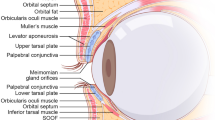Abstract
Background
For treating the aging face, a facelift is the surgical standard. A variety of techniques have been described. The purpose of the current study is to evaluate the safety of the sub-SMAS facelift compared to the subcutaneous facelift with or without SMAS plication.
Methods
A retrospective chart review was conducted on all patients who underwent facelift surgery between 2003 and 2011. Patients included in the study were seeking elective improvement of facial appearance. All charts were reviewed to identify the presence of hematoma, seroma, deep venous thrombosis, skin loss, unfavorable scar, wound infection, or motor and sensory deficit following the operation. The primary outcome was overall complication rate.
Results
A total of 229 facelifts were included; 143 patients underwent a subcutaneous facelift with or without SMAS plication and 86 underwent a sub-SMAS facelift. For the subcutaneous facelifts, 88 % of the patients were female with a mean age of 62 years. For the sub-SMAS dissections, 88 % of the patients were female with a mean age of 59 years. The overall complication rate was 29.4 % (n = 42) for patients who underwent a subcutaneous facelift compared to 24.4 % (n = 21) for patients with a sub-SMAS facelift (p = 0.4123). Analysis of each individual complication failed to yield any statistically significant difference between the two groups.
Conclusions
In the present study, sub-SMAS facelift complication rates were not statistically different compared to those of subcutaneous facelift with or without SMAS plication. These data suggest that sub-SMAS dissection can be performed with similar safety compared to the traditional subcutaneous facelift, with the potential additional advantage of the SMAS flap elevation.
Level of Evidence IV
This journal requires that authors assign a level of evidence to each article. For a full description of these Evidence-Based Medicine ratings, please refer to the Table of Contents or the online Instructions to Authors www.springer.com/00266.




Similar content being viewed by others
References
American Society for Aesthetic Plastic Surgery (2013) Cosmetic surgery national data bank statistics 2013. ASAPS. http://www.surgery.org/sites/default/files/Stats2013_4.pdf
Prado A, Andrades P, Danilla S, Castillo P, Leniz P (2006) A clinical retrospective study comparing two short-scar face lifts: minimal access cranial suspension versus lateral SMASectomy. Plast Reconstr Surg 117:1413–1425 discussion 1426–1427
Matarasso A, Elkwood A, Rankin M, Elkowitz M (2000) National plastic surgery survey: facelift techniques and complications. Plast Reconstr Surg 106:1185–1195 discussion 1196
Abboushi N, Yezhelyev M, Symbas J, Nahai F (2012) Facelift complications and the risk of venous thromboembolism: a single center’s experience. Aesthet Surg J 32:413–420
Leroy JL Jr, Rees TD, Nolan WB III (1994) Infections requiring hospital readmission following facelift surgery: incidence, treatment and sequelae. Plast Reconstr Surg 93:533–536
Pitanguy I, Machado BH (2012) Facial rejuvenation surgery: a retrospective study of 8788 cases. Aesthet Surg J 32:393–412
Thompson DP, Ashley FL (1978) Face-lift complications: a study of 922 cases performed in a 6-year period. Plast Reconstr Surg 61:40–49
Chafoo RAK (2013) Complications in facelift surgery: avoidance and management. Facial Plast Surg Clin North Am 21(4):551–558
Grover R, Jones BM, Waterhouse N (2001) The prevention of hematoma following rhytidectomy: a review of 1078 consecutive facelifts. Br J Plast Surg 54:481–486
Baker TJ, Gordon HL (1967) Complications of rhytidectomy. Plast Reconstr Surg 40:31–39
Chang S, Pusic A, Rohrich RJ (2011) A systematic review of comparison of efficacy and complication rates among face-lift techniques. Plast Reconstr Surg 127:423–433
Alpert BS, Baker DC, Hamra ST, Owsley JQ, Ramirez OM (2009) Identical twins facelifts with differing techniques: a 10-year follow-up. Plast Reconstr Surg 123:1025–1033
Miller TA (1997) Facelift: which technique? Plast Reconstr Surg 100:501
Antell DE, Orseck MJ (2006) A comparison of facelift techniques in eight consecutive sets of identical twins. Plast Reconstr Surg 120:1667–1673
Baker TJ, Gordon HL, Mosienko P (1977) Rhytidectomy: a statistical analysis. Plast Reconstr Surg 59:24–30
Rubin LR, Simpson RL (1996) The new deep plane face lift dissections versus the old superficial techniques: a comparison of neurologic complications. Plast Reconstr Surg 97:1461–1465
Sullivan CA, Masin J, Maniglia AJ, Stepnick DW (1999) Complications of rhytidectomy in an otolaryngology training program. Laryngoscope 109:198–203
Skoog T (1974) The aging face. In: Skoog T (ed) Plastic surgery: new methods and refinements. W.B Saunders, Philadelphia, pp 330–331
Author information
Authors and Affiliations
Corresponding author
Ethics declarations
Conflict of interest
The authors declare that they have no conflict of interest.
Rights and permissions
About this article
Cite this article
Rammos, C.K., Mohan, A.T., Maricevich, M.A. et al. Is the SMAS Flap Facelift Safe? A Comparison of Complications Between the Sub-SMAS Approach Versus the Subcutaneous Approach With or Without SMAS Plication in Aesthetic Rhytidectomy at an Academic Institution. Aesth Plast Surg 39, 870–876 (2015). https://doi.org/10.1007/s00266-015-0558-9
Received:
Accepted:
Published:
Issue Date:
DOI: https://doi.org/10.1007/s00266-015-0558-9




